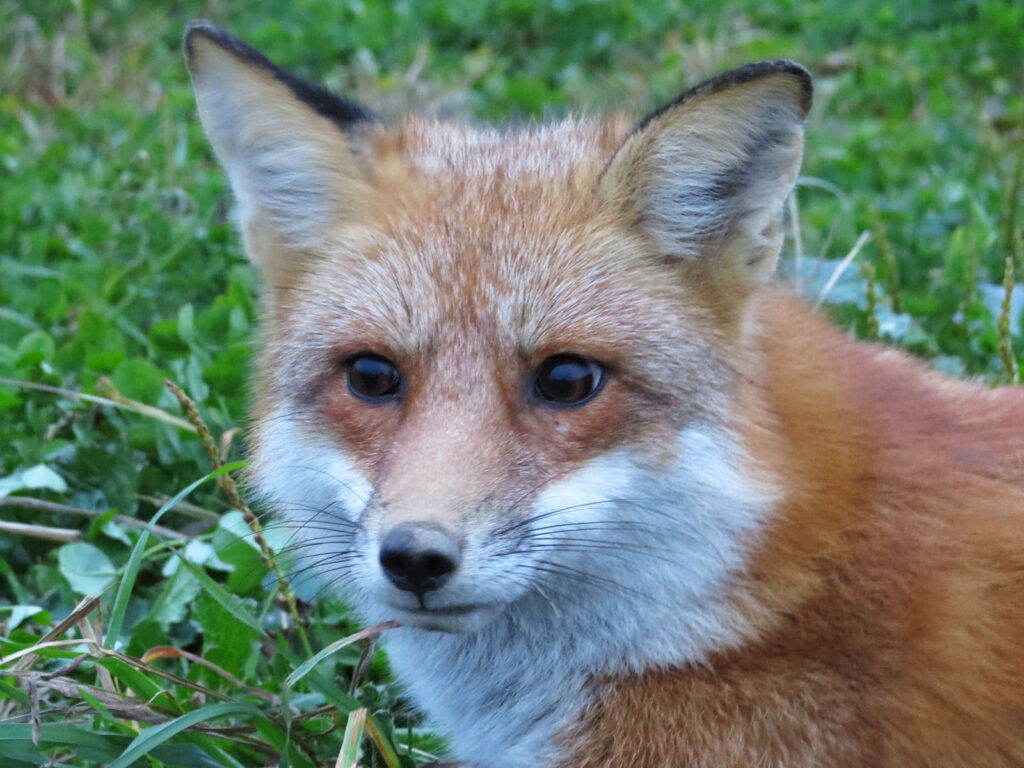Foxes are small, intelligent carnivores that are part of the canine family. They are related to dogs, coyotes, and wolves. Foxes have very sharp senses of smell, sight, and hearing. They are fast runners and can swim when necessary. Foxes are mainly nocturnal. In Pennsylvania, there are two species of fox: the red fox and the gray fox.
Red Foxes
| Appearance | Red foxes have long, red/orange fur, black ears, legs, and feet, and a long, bushy tail. Their tails are tipped with white fur. |
| Length | 22 to 25 inches with an additional 14 to 16 inch tail |
| Weight | Anywhere from 8 to 12 pounds |
| Habitat | Red foxes can be found around sparse farm areas with marshes and streams. |
| Food | Foxes will eat a variety of plants and animals depending on what is easiest to come by. This includes mice, rats, rabbits, groundhogs, opossums, chickens, squirrels, insects, birds and their eggs, fruits, grasses, and even roadkill. |
| Predators | Coyotes |
| Location in Pennsylvania | Statewide |
| Extra facts | Red foxes are known to bark at night as a way to attract breeding partners. They like to sleep in the open in winter and keep warm by huddling with their tails over their noses. Red foxes are less bothered by people than their gray counterparts and will live around populated areas. |

Gray Foxes
| Appearance | Gray foxes have gray, coarse coats with lighter colored underfur. They have bushy tails with a black streak and a black tip. |
| Length | 21 to 29 inches with an additional 11 to 16 inch tail |
| Weight | Anywhere from 7 to 13 pounds |
| Habitat | Gray foxes prefer brushy, swampy, or rugged areas. |
| Food | Similar to red foxes |
| Predators | Coyotes |
| Location in Pennsylvania | Statewide |
| Extra facts | Gray foxes can climb trees and they are the only member of the canine family with that skill. Unlike red foxes, gray foxes will hole up during winter when there is severe weather. Gray foxes tend to be the dominant species of fox—they are more aggressive. |
Both red and gray foxes will store food they haven’t eat yet by burying it in loose dirt. Both species of fox are also adaptable and can live in less-than-ideal habitats.
Complaints
Foxes can eat small livestock like poultry, rabbits and young lambs or goat kids. Foxes can carry and transmit rabies, distemper, and mange.
Solutions
Foxes can be trapped with foothold traps, snares, and cage traps. They can be shot with firearms. Poultry should be properly housed and fenced. Free-range poultry is susceptible to both bird and mammal predators.
For more information about foxes, check out the Pennsylvania Game Commission’s wildlife notes.
Special note concerning rabies vector (carrier) species. Rabies is a contagious, potentially fatal disease transmitted from one infected animal to another through a bite or scratch. Humans are susceptible to rabies and prompt medical attention is necessary. With this in mind, all rabies vector species trapped or removed by wildlife professionals must be humanely dispatched rather than relocated. Pennsylvania rabies vector species include skunks, raccoons, foxes, groundhogs, bats and coyotes.
